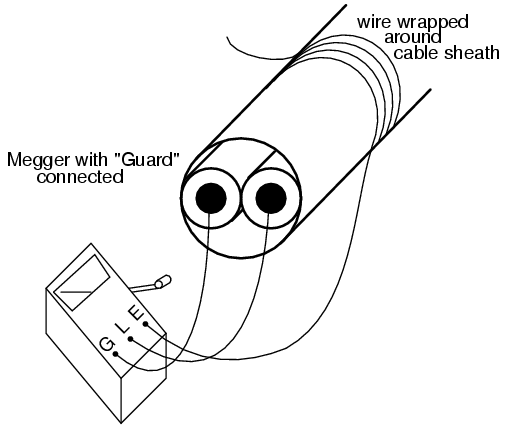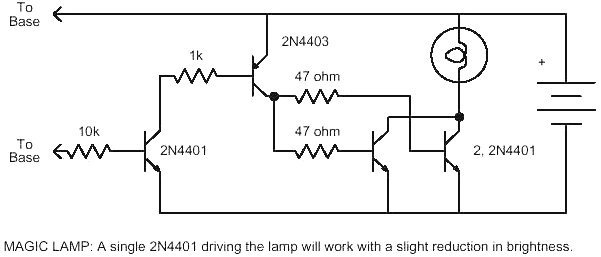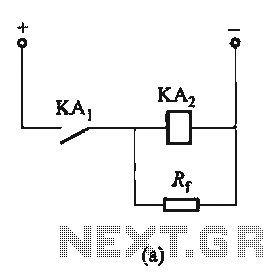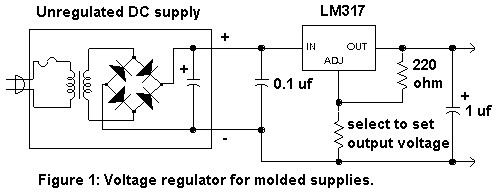
DC Lessons In Electric Circuits

A meter is a device designed to accurately detect and display an electrical quantity in a form that is readable by humans. This "readable form" is typically visual, such as the motion of a pointer on a scale, a series of lights arranged to create a bar graph, or a numerical display. In circuit analysis and testing, meters are specifically designed to measure the fundamental quantities of voltage, current, and resistance. While there are many types of meters, this discussion focuses primarily on the design and operation of these three basic types. Most modern meters are digital, meaning their displays consist of numerical digits. In contrast, older meters are mechanical and utilize a pointer device to indicate measurement values. Despite these differences, the principles for adapting a display unit to measure significant quantities of voltage, current, or resistance remain consistent. The display mechanism of a meter is commonly referred to as a movement, a term derived from its mechanical origins where a pointer moves along a scale to indicate a measured value. Although modern digital meters lack moving parts, the term "movement" is still applicable to the basic device that performs the display function. The design of digital movements is outside the scope of this discussion, but mechanical meter movements are relatively straightforward. Most mechanical movements operate on the principle of electromagnetism, where electric current through a conductor generates a magnetic field perpendicular to the direction of electron flow. The strength of this magnetic field increases with the amount of electric current. When the magnetic field from the conductor interacts with another magnetic field, a physical force is produced between the two fields. If one of these sources can move relative to the other, it will do so as current flows through the wire, with the motion (typically against the resistance of a spring) being proportional to the current strength. The earliest meter movements, known as galvanometers, were designed for maximum sensitivity. A simple galvanometer can be constructed using a magnetized needle (similar to a compass needle) suspended from a string and placed within a coil of wire. Current flowing through the coil generates a magnetic field that deflects the needle from its alignment with the Earth's magnetic field. Although such instruments were useful historically, they are now largely obsolete except for proof-of-concept experiments and educational purposes. They are highly sensitive to movement and disturbances in the Earth's natural magnetic field. Today, the term "galvanometer" generally refers to any electromagnetic meter movement designed for exceptional sensitivity, rather than rudimentary devices. Modern practical electromagnetic meter movements can be constructed where a pivoting wire coil is suspended in a strong magnetic field, shielded from external influences. This design is typically referred to as a permanent-magnet moving coil (PMMC) movement. In this configuration, the movement's needle indicates the measured current level, with an increase in current causing the needle to move further right on the scale.
The design and operation of meters, particularly PMMC movements, involve several key components and principles. The core of a PMMC meter consists of a coil of wire wound around a lightweight frame, which is positioned within a permanent magnetic field. The interaction between the magnetic field created by the current in the coil and the external magnetic field generates a torque that causes the coil to rotate. This rotation is proportional to the current flowing through the coil.
The coil is typically mounted on a pivot, allowing it to move freely within the magnetic field. A spring mechanism is employed to provide a restoring force, ensuring that the coil returns to its zero position when no current is flowing. The scale on which the needle moves is calibrated to provide a direct reading of the current, voltage, or resistance being measured.
In addition to the mechanical components, modern meters often incorporate electronic circuitry that enhances their functionality. This circuitry can include analog-to-digital converters for digital displays, protection circuits to prevent damage from overcurrent, and filtering circuits to improve measurement accuracy by minimizing noise.
Calibration is an essential aspect of meter design, ensuring that the readings are accurate across the specified range of measurements. Calibration involves comparing the meter's output against known standards and making adjustments as necessary.
Overall, the evolution of meter design from mechanical to digital has significantly improved measurement accuracy and reliability, making them indispensable tools in electrical engineering and circuit analysis.A meter is any device built to accurately detect and display an electrical quantity in a form readable by a human being. Usually this "readable form" is visual: motion of a pointer on a scale, a series of lights arranged to form a "bargraph, " or some sort of display composed of numerical figures.
In the analysis and testing of circuits, there are meters designed to accurately measure the basic quantities of voltage, current, and resistance. There are many other types of meters as well, but this chapter primarily covers the design and operation of the basic three. Most modern meters are "digital" in design, meaning that their readable display is in the form of numerical digits.
Older designs of meters are mechanical in nature, using some kind of pointer device to show quantity of measurement. In either case, the principles applied in adapting a display unit to the measurement of (relatively) large quantities of voltage, current, or resistance are the same.
The display mechanism of a meter is often referred to as a movement, borrowing from its mechanical nature to move a pointer along a scale so that a measured value may be read. Though modern digital meters have no moving parts, the term "movement" may be applied to the same basic device performing the display function.
The design of digital "movements" is beyond the scope of this chapter, but mechanical meter movement designs are very understandable. Most mechanical movements are based on the principle of electromagnetism: that electric current through a conductor produces a magnetic field perpendicular to the axis of electron flow.
The greater the electric current, the stronger the magnetic field produced. If the magnetic field formed by the conductor is allowed to interact with another magnetic field, a physical force will be generated between the two sources of fields. If one of these sources is free to move with respect to the other, it will do so as current is conducted through the wire, the motion (usually against the resistance of a spring) being proportional to strength of current.
The first meter movements built were known as galvanometers, and were usually designed with maximum sensitivity in mind. A very simple galvanometer may be made from a magnetized needle (such as the needle from a magnetic compass) suspended from a string, and positioned within a coil of wire.
Current through the wire coil will produce a magnetic field which will deflect the needle from pointing in the direction of earth`s magnetic field. An antique string galvanometer is shown in the following photograph: Such instruments were useful in their time, but have little place in the modern world except as proof-of-concept and elementary experimental devices.
They are highly susceptible to motion of any kind, and to any disturbances in the natural magnetic field of the earth. Now, the term "galvanometer" usually refers to any design of electromagnetic meter movement built for exceptional sensitivity, and not necessarily a crude device such as that shown in the photograph.
Practical electromagnetic meter movements can be made now where a pivoting wire coil is suspended in a strong magnetic field, shielded from the majority of outside influences. Such an instrument design is generally known as a permanent-magnet, moving coil, or PMMC movement: In the picture above, the meter movement "needle" is shown pointing somewhere around 35 percent of full-scale, zero being full to the left of the arc and full-scale being completely to the right of the arc.
An increase in measured current will drive the needle to point further to the right and a decrease will cause the needle to drop back downof metal connection terminals on the back for current f the scale sweep insteype of meter or size of meter movement, there we`ll need to design a 🔗 External reference
The design and operation of meters, particularly PMMC movements, involve several key components and principles. The core of a PMMC meter consists of a coil of wire wound around a lightweight frame, which is positioned within a permanent magnetic field. The interaction between the magnetic field created by the current in the coil and the external magnetic field generates a torque that causes the coil to rotate. This rotation is proportional to the current flowing through the coil.
The coil is typically mounted on a pivot, allowing it to move freely within the magnetic field. A spring mechanism is employed to provide a restoring force, ensuring that the coil returns to its zero position when no current is flowing. The scale on which the needle moves is calibrated to provide a direct reading of the current, voltage, or resistance being measured.
In addition to the mechanical components, modern meters often incorporate electronic circuitry that enhances their functionality. This circuitry can include analog-to-digital converters for digital displays, protection circuits to prevent damage from overcurrent, and filtering circuits to improve measurement accuracy by minimizing noise.
Calibration is an essential aspect of meter design, ensuring that the readings are accurate across the specified range of measurements. Calibration involves comparing the meter's output against known standards and making adjustments as necessary.
Overall, the evolution of meter design from mechanical to digital has significantly improved measurement accuracy and reliability, making them indispensable tools in electrical engineering and circuit analysis.A meter is any device built to accurately detect and display an electrical quantity in a form readable by a human being. Usually this "readable form" is visual: motion of a pointer on a scale, a series of lights arranged to form a "bargraph, " or some sort of display composed of numerical figures.
In the analysis and testing of circuits, there are meters designed to accurately measure the basic quantities of voltage, current, and resistance. There are many other types of meters as well, but this chapter primarily covers the design and operation of the basic three. Most modern meters are "digital" in design, meaning that their readable display is in the form of numerical digits.
Older designs of meters are mechanical in nature, using some kind of pointer device to show quantity of measurement. In either case, the principles applied in adapting a display unit to the measurement of (relatively) large quantities of voltage, current, or resistance are the same.
The display mechanism of a meter is often referred to as a movement, borrowing from its mechanical nature to move a pointer along a scale so that a measured value may be read. Though modern digital meters have no moving parts, the term "movement" may be applied to the same basic device performing the display function.
The design of digital "movements" is beyond the scope of this chapter, but mechanical meter movement designs are very understandable. Most mechanical movements are based on the principle of electromagnetism: that electric current through a conductor produces a magnetic field perpendicular to the axis of electron flow.
The greater the electric current, the stronger the magnetic field produced. If the magnetic field formed by the conductor is allowed to interact with another magnetic field, a physical force will be generated between the two sources of fields. If one of these sources is free to move with respect to the other, it will do so as current is conducted through the wire, the motion (usually against the resistance of a spring) being proportional to strength of current.
The first meter movements built were known as galvanometers, and were usually designed with maximum sensitivity in mind. A very simple galvanometer may be made from a magnetized needle (such as the needle from a magnetic compass) suspended from a string, and positioned within a coil of wire.
Current through the wire coil will produce a magnetic field which will deflect the needle from pointing in the direction of earth`s magnetic field. An antique string galvanometer is shown in the following photograph: Such instruments were useful in their time, but have little place in the modern world except as proof-of-concept and elementary experimental devices.
They are highly susceptible to motion of any kind, and to any disturbances in the natural magnetic field of the earth. Now, the term "galvanometer" usually refers to any design of electromagnetic meter movement built for exceptional sensitivity, and not necessarily a crude device such as that shown in the photograph.
Practical electromagnetic meter movements can be made now where a pivoting wire coil is suspended in a strong magnetic field, shielded from the majority of outside influences. Such an instrument design is generally known as a permanent-magnet, moving coil, or PMMC movement: In the picture above, the meter movement "needle" is shown pointing somewhere around 35 percent of full-scale, zero being full to the left of the arc and full-scale being completely to the right of the arc.
An increase in measured current will drive the needle to point further to the right and a decrease will cause the needle to drop back downof metal connection terminals on the back for current f the scale sweep insteype of meter or size of meter movement, there we`ll need to design a 🔗 External reference





